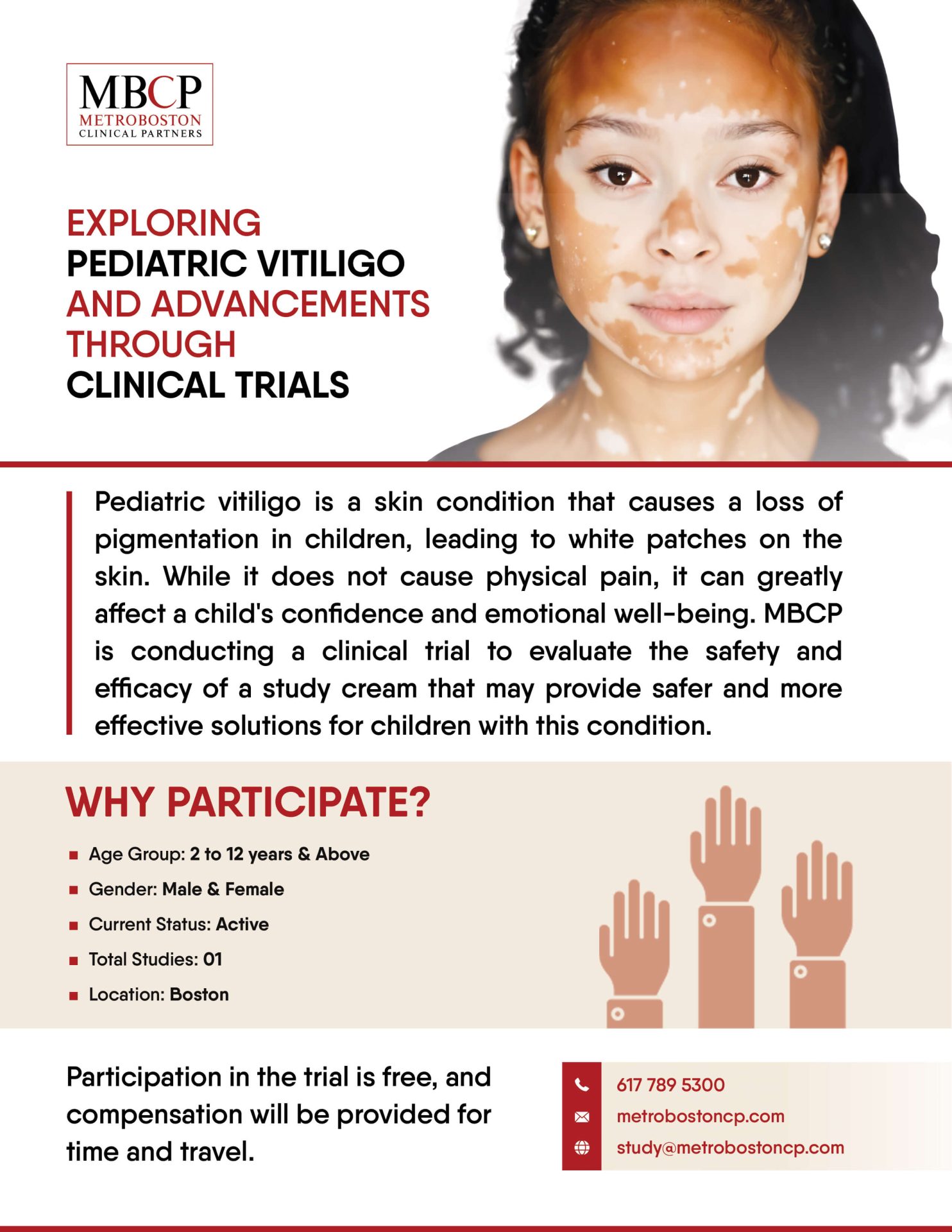MetroBoston is conducting Pediatric vitiligo clinical trials to explore potential treatments for pediatric vitiligo, giving families access to advanced care and the chance to support vital research. Your participation could help advance vital knowledge and make a meaningful difference in the lives of many.
Learn more about this important study and enroll today!
